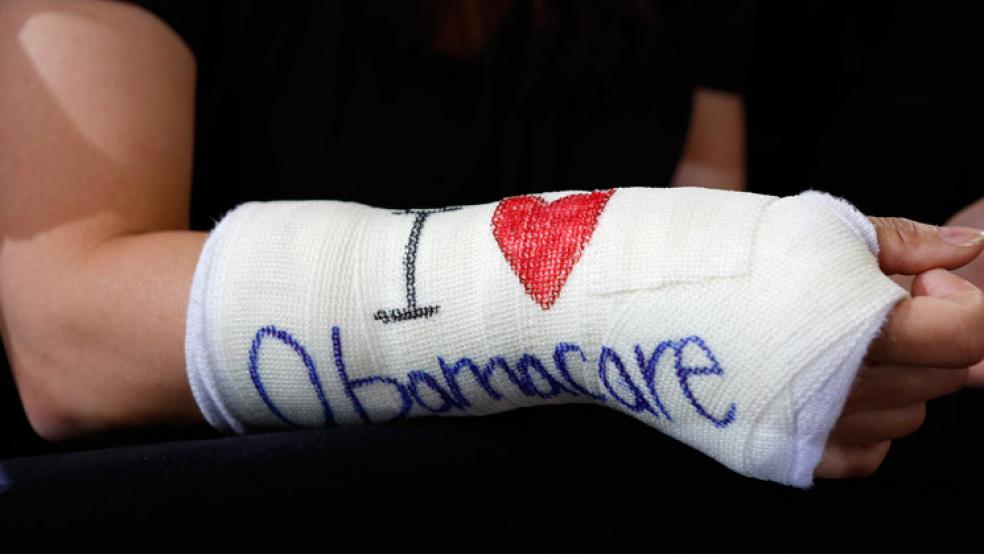After a few false starts and technical issues, freelance journalist Candace Talmadge, 59, finally enrolled in an Obamacare health insurance plan on November 22, and her application was approved December 4.
Under the law, that means that Talmadge’s coverage should have kicked in January 1. More than a month later, Talmadge, who lives Lancaster, Texas, is still waiting to receive a bill from her insurers, Blue Cross-Blue Shield of Texas, so that she can pay for the policy and receive her insurance card.
“I will pay that invoice the day that I get it,” Candace says. “I just haven’t gotten it. So I can go to the doctor and tell him I have signed up for insurance, but I can’t prove it to him.”
Talmadge isn’t the only person in “insurance limbo.” Friday was supposed to be the deadline for consumers to pay for insurance they signed up for by Dec. 24 that would kick in retroactively on January 1. Insurers have said that they’re struggling to get many enrollees to actually pay their premiums, but experts say that the gap between the number of people who have enrolled and the number of people who have paid also reflects a backlog by insurers who were not prepared for the crush of consumers who in late December, after the administration repeatedly pushed back the enrollment deadline from the original December 15 date.
While there are no national figures yet detailing how many enrollees have actually paid their premiums, The Wall Street Journal reported Friday that the gap between those who have enrolled and those who have paid ranged from less than 50 percent in Michigan and Illinois to more than 80 percent in Arizona. Further complicating the calculation, several large insurers have extended the deadline for payment through the end of the month.
Related: The Obamacare ‘Shotgun Wedding’—Marry or Lose Your Home
The disastrous rollout of the exchanges meant that nearly half of the 2.1 million people who signed up between October 1 and December 24, did so in December. Plus, even when the site’s interface began working for consumers, problems with the back-end meant that the insurers still weren’t seamlessly receiving the applications via the government Web sites. Since it takes a few weeks for an insurer to process an application in normal times, insurers are still plodding through a backlog of submissions.
“It’s pretty rare to have this kind of retro-activity in health insurance,” says Larry Levitt, a senior vice president of the Kaiser Family Foundation, a nonpartisan health policy research organization. “There certainly are people out there who have insurance but don’t have any way to prove it.”
Levitt concedes that some consumers may also have signed up for insurance but have since decided that they can’t or don’t want to pay the premiums required for the coverage to kick in.
Consumers who have signed up for insurance but haven’t received an invoice should contact their insurer to see if they can pay directly for the coverage. “If things get lost or crossed in the mail, you’re still responsible for making the payment,” says Carrie McLean of eHealth. “Until the money has been withdrawn from your account, you don’t have insurance.”
In some cases, people who have already paid their premiums still haven’t received their insurance cards. Those consumers should call their insurers and ask for a policy number, which their doctor can use to process a claim even without a physical card.
It’s unknown how many of the 2.1 million people who have enrolled in the exchanges were previously uninsured, and how many had received cancellation notices under the new law. Uninsured Americans have until March 31 to get coverage, or they’ll face a penalty of $95 per person or 1 percent of yearly income, whichever is higher.
Related: Why Divorce Attorneys Will Love Obamacare
Administration officials have stressed that the number of people who enroll in the health exchanges matters less than who is enrolling. In order to function properly, the exchanges need to sign up healthy, typically young Americans in order to offset the cost of premiums for older, sicker individuals who tend to rack up higher medical bills. Yesterday, the administration said that 24 percent of enrollees are aged 18-34.
That’s short of the 40 percent that the Kaiser Family Foundation has estimated would keep the market stable, but if it holds through the end of March, there should be only a modest impact on premiums, Levitt says. He doesn’t expect the premium-payment gap to have a significant impact on lasting rollout of the law.
“It’s very much a short-term problem,” he says. “Some people might fall through the cracks, but given that there are still two-and-a-half months left in open enrollment, I don’t think it’s going to be a huge issue.”
Top reads from The Fiscal Times:





